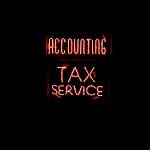 As we are nearing the end of 2017 it’s a good time to review the changes to the IRS tax provisions. Below details some of the most prevalent provisions that expired in 2016, the provisions that have been permanently extended, and other extended tax provisions. These items are subject to change with the possible enactment of new tax laws.
As we are nearing the end of 2017 it’s a good time to review the changes to the IRS tax provisions. Below details some of the most prevalent provisions that expired in 2016, the provisions that have been permanently extended, and other extended tax provisions. These items are subject to change with the possible enactment of new tax laws.
Provisions that expired on December 31, 2016 include:
- Several renewable energy credits including credit for residential energy property, credit for qualified fuel cell motor vehicles, credit for two-wheeled plug-in electric vehicles, credit for hybrid solar lighting system property, and credit for geothermal heat pump property, small wind property, and combined heat and power property.
- Residence cancellation of debt, which excluded from gross income discharge of qualified principal residence indebtedness income.
- Premiums for mortgage insurance deduction.
- Medical expense deduction – the adjusted gross income (AGI) floor for individuals age 65 and older of 7.5% expired. Beginning January 1, 2017, all taxpayers are subject to a medical deduction for costs that exceed 10% of AGI.
- A deduction for qualified tuition and related expenses.
Provisions that have been made permanent include:
- Commuting costs – this provision allows the limit for the monthly tax exclusion for employer-provided transit passes and vanpools to be the same as the limit for employer-provided parking benefits.
- RMD to charity – permits taxpayers of at least 70½ years of age to distribute up to $100,000 in qualified charitable distributions from individual retirement plans without including the distributions in income.
- Section 529 plans are now permitted to use funds for computers and technology. It also allows redeposit of funds if tuition is refunded.
- Educator’s expense – allows for a deduction of up to $250 on any unreimbursed expenses.
- Additional Child Tax Credit – the child tax credit (CTC) is a $1,000 credit and to the extent the CTC exceeds the taxpayer’s liability, the taxpayer is eligible for the additional child tax credit which is equal to 15 percent of earned income in excess of a threshold dollar amount. The provision permanently sets the threshold dollar amount at an unindexed $3,000.
- Deduction of state and local general sales taxes – allows for the option to claim an itemized deduction for state and local general sales taxes in lieu of an itemized deduction of state and local income taxes. The taxpayer may deduct either the actual dollar amount of sales tax paid or deduct an amount prescribed by the IRS.
- Enhanced deduction for charitable contributions of food inventory which permits for a deduction limited to 15 percent of the taxpayer’s AGI.
- 15-year straight-line depreciation for qualified leasehold improvements, qualified restaurant buildings and improvements, and qualified retail improvements.
- Section 179 property extension and modification of increased expensing limitations and treatment of certain real property. The provision permanently extends the expensing limitation and phase-out amounts of $500,000 and $2 million, respectively. The provision modifies the expensing limitation by indexing both the $500,000 and $2 million limits for inflation beginning in 2016 and treats air conditioning and heating units placed in service after December 31, 2015 as eligible for expensing. In addition, the expensing limitation with respect to qualified real property of $250,000 is eliminated beginning in 2016.
Other extended provisions:
- The work opportunity tax credit is extended through 2019. In addition, this provision modifies the credit beginning in 2016 to apply to employers that hire qualified long-term unemployed individuals and increases the credit for this type of hire to 40% of the first $6,000 of wages.
- Bonus depreciation is extended for property acquired and placed in service during 2015 through 2019. Under this extended provision, bonus depreciation is 50 percent for property placed in service during 2015, 2016 and 2017 and phases down to 40 percent in 2018 and 30 percent in 2019.
Since new tax laws are possible in the near future, a good planning opportunity would be to take advantage of these permanent and extended tax provisions during the 2017 tax year before they are gone!
If any of the above provisions apply to you or if you need assistance with your year-end tax planning please contact us.
Photo by Jeremy Brooks, (License)
